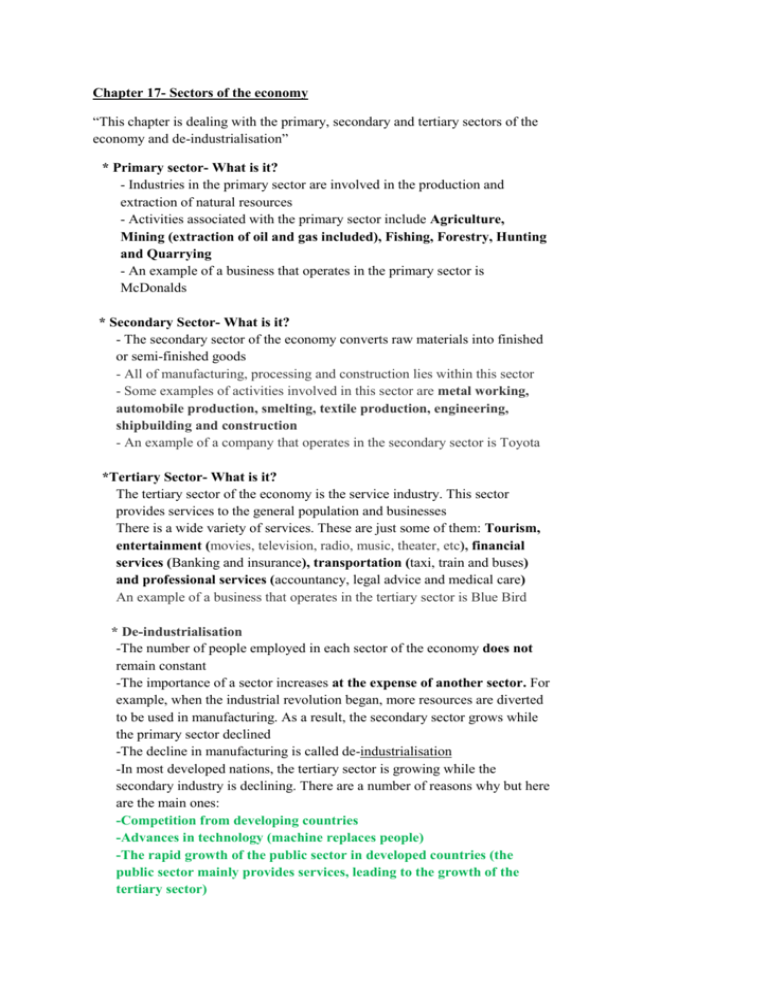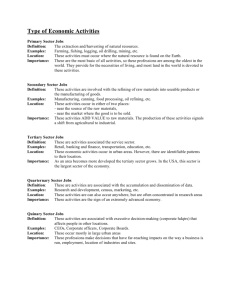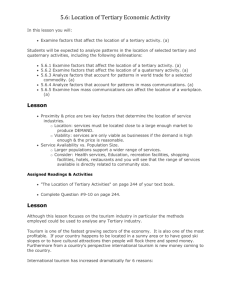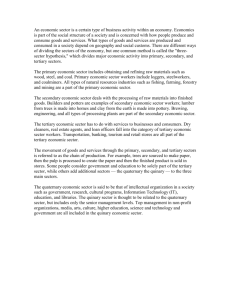Chapter 17- Sectors of the economy
advertisement

Chapter 17- Sectors of the economy “This chapter is dealing with the primary, secondary and tertiary sectors of the economy and de-industrialisation” * Primary sector- What is it? - Industries in the primary sector are involved in the production and extraction of natural resources - Activities associated with the primary sector include Agriculture, Mining (extraction of oil and gas included), Fishing, Forestry, Hunting and Quarrying - An example of a business that operates in the primary sector is McDonalds * Secondary Sector- What is it? - The secondary sector of the economy converts raw materials into finished or semi-finished goods - All of manufacturing, processing and construction lies within this sector - Some examples of activities involved in this sector are metal working, automobile production, smelting, textile production, engineering, shipbuilding and construction - An example of a company that operates in the secondary sector is Toyota *Tertiary Sector- What is it? The tertiary sector of the economy is the service industry. This sector provides services to the general population and businesses There is a wide variety of services. These are just some of them: Tourism, entertainment (movies, television, radio, music, theater, etc), financial services (Banking and insurance), transportation (taxi, train and buses) and professional services (accountancy, legal advice and medical care) An example of a business that operates in the tertiary sector is Blue Bird * De-industrialisation -The number of people employed in each sector of the economy does not remain constant -The importance of a sector increases at the expense of another sector. For example, when the industrial revolution began, more resources are diverted to be used in manufacturing. As a result, the secondary sector grows while the primary sector declined -The decline in manufacturing is called de-industrialisation -In most developed nations, the tertiary sector is growing while the secondary industry is declining. There are a number of reasons why but here are the main ones: -Competition from developing countries -Advances in technology (machine replaces people) -The rapid growth of the public sector in developed countries (the public sector mainly provides services, leading to the growth of the tertiary sector) -Changes in consumer demand: people may prefer to spend more of their income on services rather than manufactured goods. There is also a decline in demand for traditional industries in manufacturing such as textiles -In most developing countries, the secondary and tertiary sector is expanding -For example, Brazil manufacture goods on a large scale and export them to developed countries -In underdeveloped countries, most people are still employed in the primary sector. There is little growth in the secondary and tertiary sector















